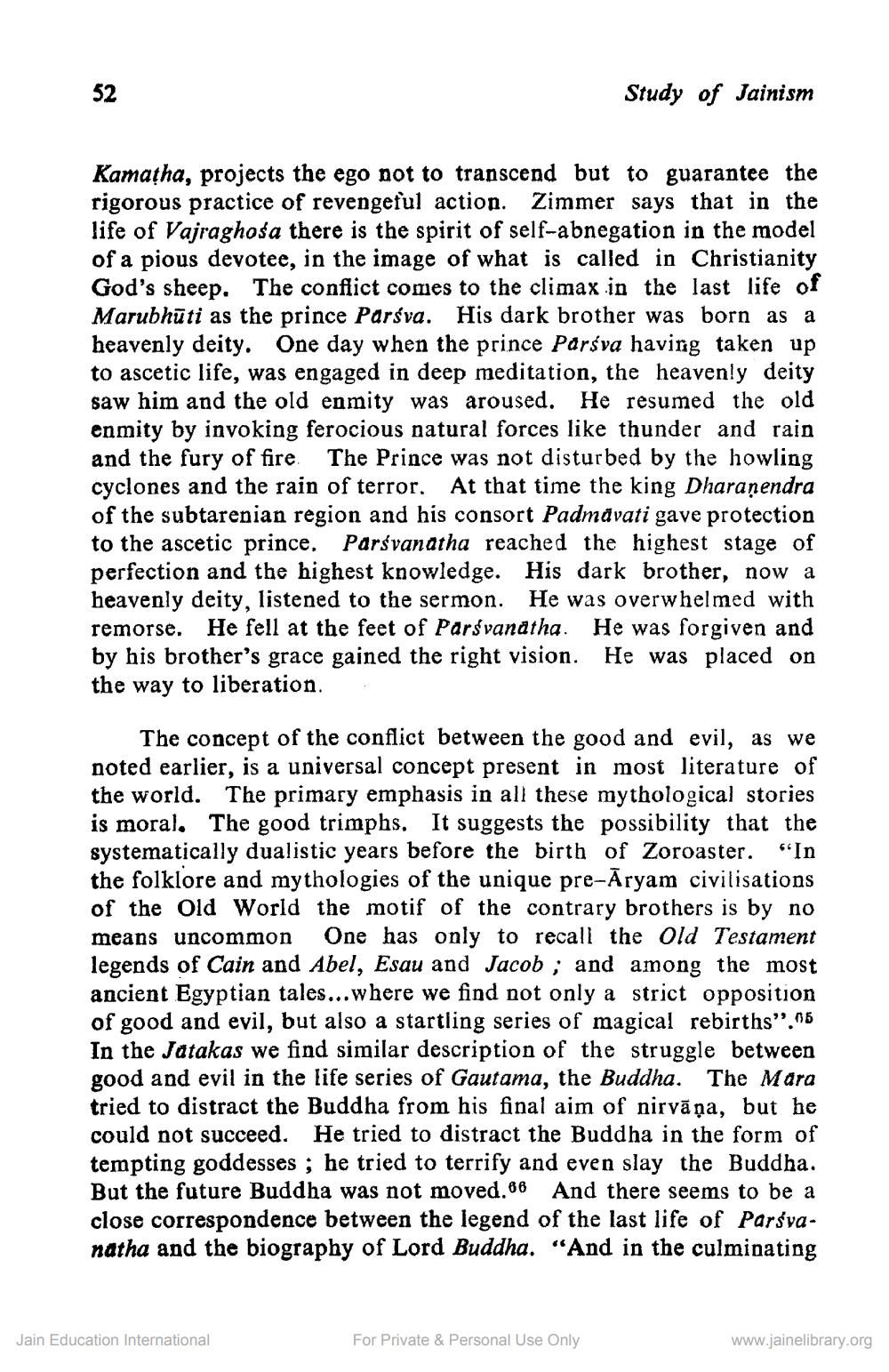________________
52
Kamatha, projects the ego not to transcend but to guarantee the rigorous practice of revengeful action. Zimmer says that in the life of Vajraghosa there is the spirit of self-abnegation in the model of a pious devotee, in the image of what is called in Christianity God's sheep. The conflict comes to the climax in the last life of Marubhuti as the prince Parsva. His dark brother was born as a heavenly deity. One day when the prince Parsva having taken up to ascetic life, was engaged in deep meditation, the heavenly deity saw him and the old enmity was aroused. He resumed the old enmity by invoking ferocious natural forces like thunder and rain and the fury of fire. The Prince was not disturbed by the howling cyclones and the rain of terror. At that time the king Dharanendra of the subtarenian region and his consort Padmavati gave protection to the ascetic prince. Parsvanatha reached the highest stage of perfection and the highest knowledge. His dark brother, now a heavenly deity, listened to the sermon. He was overwhelmed with remorse. He fell at the feet of Parsvanatha. He was forgiven and by his brother's grace gained the right vision. He was placed on the way to liberation.
Study of Jainism
The concept of the conflict between the good and evil, as we noted earlier, is a universal concept present in most literature of the world. The primary emphasis in all these mythological stories is moral. The good trimphs. It suggests the possibility that the systematically dualistic years before the birth of Zoroaster. "In the folklore and mythologies of the unique pre-Aryam civilisations of the Old World the motif of the contrary brothers is by no means uncommon One has only to recall the Old Testament legends of Cain and Abel, Esau and Jacob; and among the most ancient Egyptian tales...where we find not only a strict opposition of good and evil, but also a startling series of magical rebirths"."5 In the Jatakas we find similar description of the struggle between good and evil in the life series of Gautama, the Buddha. The Mara tried to distract the Buddha from his final aim of nirvāņa, but he could not succeed. He tried to distract the Buddha in the form of tempting goddesses; he tried to terrify and even slay the Buddha. But the future Buddha was not moved.66 And there seems to be a close correspondence between the legend of the last life of Parsvanatha and the biography of Lord Buddha. “And in the culminating
Jain Education International
For Private & Personal Use Only
www.jainelibrary.org




